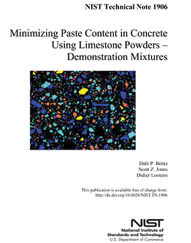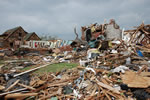Sources: National Institute of Standards and Technology, Gaithersburg, Md.; CP staff The U.S. Department of Commerce’s National Institute of Standards and Technology (NIST) has named members of a technical team investigating the June 2021 partial collapse of the reinforced concrete Champlain Towers South condominium in Surfside, Fla. Cornell University Professor of Civil Engineering Kenneth Hover and ACI Committee 318 Immediate…
Read MoreTag: NIST
ACI 133 to help federal agency investigate Florida tower collapse
Sources: American Concrete Institute, Farmington Hills, Mich.; CP staff ACI Committee 133 on Disaster Reconnaissance will coordinate a team to assist National Institute of Standards and Technology (NIST) structural engineering experts study the progressive failure of a 12-story reinforced concrete structure, Champlain Towers South, in Surfside, Fla. ACI Executive Vice President Ronald Burg cited the action in a statement on…
Read MoreFeds’ resilience program funds concrete, masonry building research
Sources: National Institute of Standards and Technology (NIST), Gaithersburg, Md.; CP staff
NIST has announced grants for research into how earthquakes, wind and fire affect the built environment, targeting results that inform building designs, codes and standards. One of 12 projects addresses combustible-material performance in the face of hazard exposure; three others focus on concrete or masonry structure behavior following seismic events.
Read MoreNew ASTM standard links building performance, community resilience
Source: ASTM International, West Conshohocken, Pa.; CP staff
The forthcoming ASTM E3130, Developing Cost-Effective Community Resilience Strategies will inform authorities on ways to respond, withstand, and recover from a range of potential catastrophes, such as natural hazards, utility outages, and human-caused disruptions. The standard provides an economic framework to evaluate investment strategies, along with a seven-step approach to help communities formulate resilience plans.
Read MoreGround limestone exhibits mixture paste content optimization potential
Keen on lower carbon alternatives to portland cement-only binders, the U.S. Department of Commerce’s National Institute of Standards and Technology has published Technical Note 1906, Minimizing Paste Content in Concrete Using Limestone Powders — Demonstration Mixtures. Researchers cite target performance levels in concrete mixtures with up to 28 percent lower portland cement content using a binary blend with limestone powder.
Read MoreNew ASTM standard informs sustainable manufacturing
Source: ASTM International, West Conshohocken, Pa.
ASTM Committee E60 on Sustainability has developed E3012, Guide for Characterizing Environmental Aspects of Manufacturing Process, to help businesses incorporate sustainable practices and transition into science-based modeling, decision-making and production.
Read MoreNIST spells role of ground limestone in optimizing mixture paste content
Sources: National Institute of Standards and Technology (NIST), Gaithersburg, Md.; CP staff
Keen on lower carbon alternatives to portland cement-only binders, the U.S. Department of Commerce-backed NIST has published Technical Note 1906, Minimizing Paste Content in Concrete Using Limestone Powders – Demonstration Mixtures. Researchers cite target performance levels in concrete mixtures with up to 28 percent lower portland cement content using a binary blend with limestone powder.
Read MoreFirst code improvements adopted based on Feds’ Joplin tornado study
Protecting schools and their associated high-occupancy buildings from violent tornadoes is the goal of the first approved building code changes based on recommendations from the National Institute of Standards and Technology (NIST) technical investigation into the impacts of the May 2011 tornado that devestated Joplin, Mo.
Standard models slab mixes’ drying behavior
Newly published ASTM C1792, Test Method for Measurement of Mass Loss Versus Time for One-Dimensional Drying of Saturated Concretes will enable engineers and producers to characterize how hardened mixtures dry. “The information can be used to directly assess the drying rates of a given concrete mixture,” says ASTM member Dale Bentz, chemical engineer for the Materials and Structural Systems Division in the National Institute for Standards and Technology Engineering Laboratory. “[It] could be valuable for industrial flooring applications, for example, where quick drying is often desirable.”

